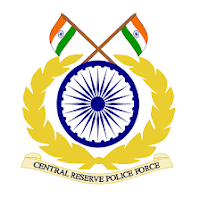CRPF Head Constable Syllabus 2025 & Exam Pattern: This post should be read carefully by those who have applied for the CRPF Head Constable Exam. Candidates who plan to take the CRPF HC Exam should familiarise themselves with the CRPF Exam Pattern and Syllabus. In this article, you can find the entire CRPF Head Constable Syllabus 2025.
In addition, we have included the CRPF Head Constable Exam Pattern in its entirety. The CRPF Head Constable Syllabus and Exam Pattern are available here. For further information on the Head Constable General Duty through Limited Departmental Competitive Examination, candidates can refer to the Central Reserve Police Force’s official website at crpf.gov.in.
Contents
CRPF Head Constable Syllabus 2025 Overview
| Board Name | Central Reserve Police Force (CPRF) |
| Designation Name | Head Constable |
| Category | Government Syllabus |
| Official Website | crpf.gov.in |
CRPF Head Constable Syllabus 2025 – Exam Pattern
The written test will consist of only one paper with 225 marks and will be divided into two parts:
Part 1
| Name of the Subject | Number of Questions | Marks |
| Hindi Language or English Language (optional) | – | – |
| General Intelligence | – | – |
| Numerical Aptitude | – | – |
| Clerical Aptitude | – | – |
Part 2
| Name of the Subject | Number of Questions | Marks |
| Descriptive paper consisting of two questions i.e. Essay writing of 15 marks which is to be written in about 150 words in Hindi or English and letter writing of 10 marks which is to be written in about 100 words in Hindi or English. | – | 25 |
Total Marks: 225
CRPF Head Constable Syllabus 2025 – Subject-wise
The Sub Topics that will be asked in the CRPF Head Constable Exam are listed in this section. To improve their chances of passing the CRPF HC Exam, candidates might create a schedule. In this essay, we propose that you study the subjects listed below in order to achieve a high score. Candidates can read all of the sections in this post to learn more about the CRPF Head Constable Exam.
General Intelligence
Drawing Inferences
Word Building
Symbolic Operations
Space Orientation
Social Intelligence
Semantic Analogy
Semantic Classification
Figural Analogy
Figural Classification
Emotional Intelligence
Semantic Series
Symbolic & Number Analogy
Coding & Decoding
Numerical Operations
Problem Solving
Statement Conclusion
Syllogistic Reasoning
Problem Solving
Coding & Decoding
Figural Pattern – Folding & Completion
Embedded Figures
Space Visualization
Decision making
Visual Memory
Discrimination
Venn Diagrams
Symbolic & Number Classification
Number Series
Critical Thinking
Figural Series
Analogies
Word Building
Symbolic Operations
Similarities & Differences
Punched Hole/ Pattern – Folding & Unfolding
Non-verbal Series
Judgment
Arithmetical Reasoning & Figural Classification
Arithmetic Number Series
Observation
Relationship Concepts
Coding & Decoding
Figural Pattern – Folding & Completion
Embedded Figures
Space Visualization
Spatial Orientation
Analysis
General English
Improvement of Sentences
Idioms & Phrases
Shuffling of Sentences in a passage
Cloze Passage
Sentence Rearrangement
One-word substitution
Spellings/ Detecting Mis-spelt words
Fill in the Blanks
Vocabulary
Synonyms/ Homonyms
Antonyms and its correct usage
Spot the Error
Active/ Passive Voice of Verbs
Comprehension Passage
Common Error
Shuffling of Sentence parts
Conversions
Grammar
Antonyms
Numerical Aptitude
Decimals and Fractions and relationship between Numbers
Fundamental Arithmetical operations
Time and Distance
Ratio and Time
Percentages, Ratio & proportion
Use of Table and Graphs
Mensuration
Time and Work
Computation of Whole Numbers
Number Systems
Profit and Loss
Discount
Averages
Interest
Mensuration
Time and Work
Clerical Aptitude
Alphabetic Filing
Basic Mathematics
Typing Speed & Accuracy
Data Checking
Grammar & Spelling
Attention to Detail
Mathematical Word Problems
Vocabulary
Reading Comprehension



